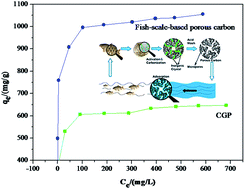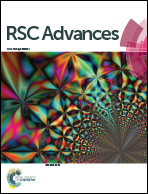High-performance fish-scale-based porous carbon for the removal of methylene blue from aqueous solution
Abstract
The adsorption of methylene blue (MB) from aquatic systems by the fish-scale-based hierarchical lamellar porous carbon (FHLC) was investigated. In this paper, the FHLC was used as an alternative adsorbent to replace the Norit CGP, a commercial activated carbon, and showed an overall fast and pH-dependent MB adsorption. The effect of contact time, pH and concentration on MB adsorption was investigated. It was found that the adsorption behaviours of FHLC and CGP could be described by a monolayer Langmuir type isotherm. The kinetic data followed the pseudo second-order kinetic model for both activated carbons as the linear correlation coefficients were all above 0.9999. Thermodynamic analyses indicated that the adsorption was an endothermic and spontaneous physisorption process. The maximum Langmuir adsorption capacity of the FHLC was 555.55 mg g−1 at pH = 7.07 and 1050.72 mg g−1 at pH = 11.00 while that of the CGP was 432.90 mg g−1 at pH = 7.07 and 649.35 mg g−1 at pH = 11.00, respectively. The adsorption capacity of the FHLC was much better than that of the CGP at different pH values. Our study shows that fish-scale-based carbon could be used as a high-performance and cost-effective adsorbent to remove MB in aqueous solution in the wastewater treatment.


 Please wait while we load your content...
Please wait while we load your content...